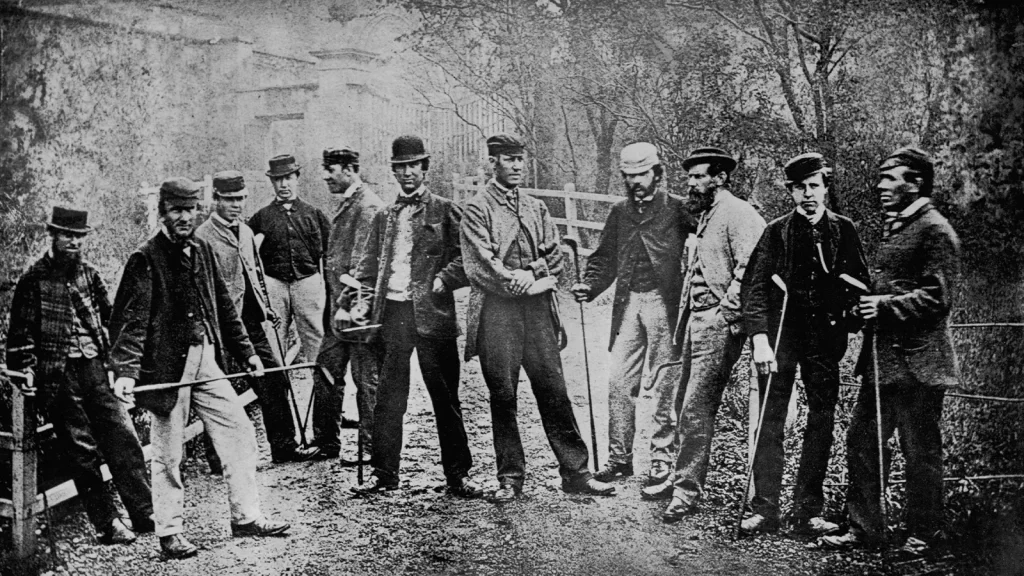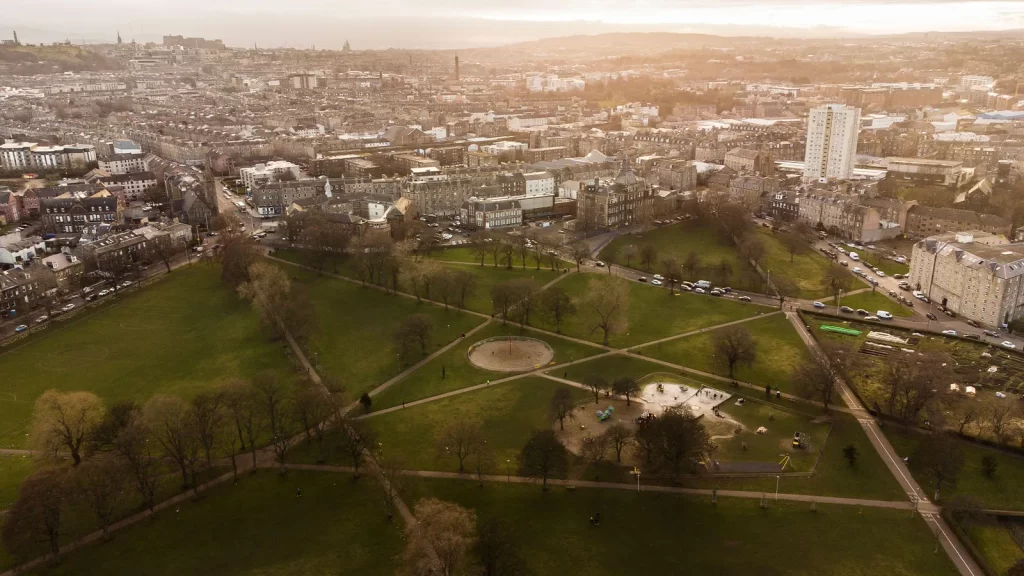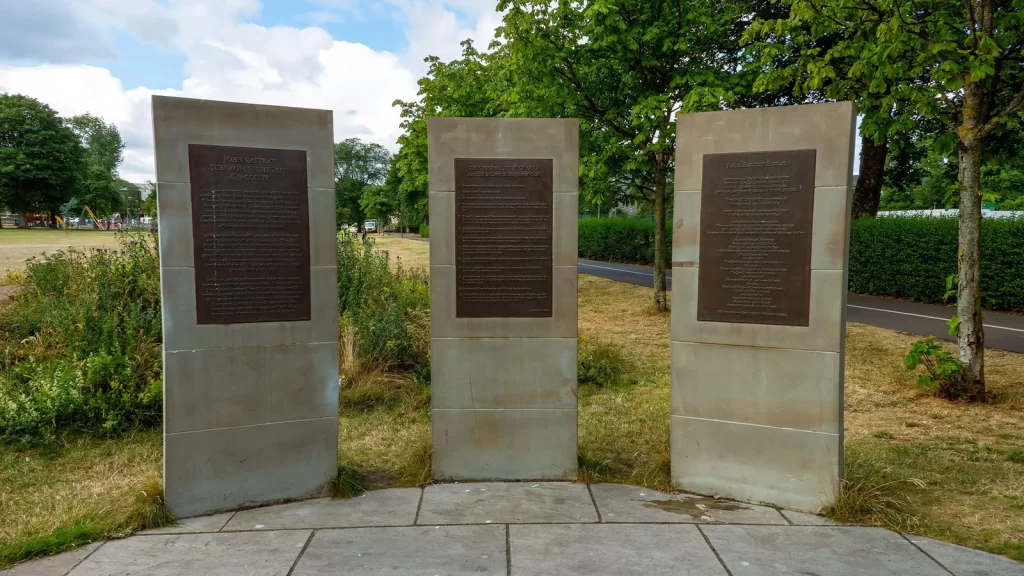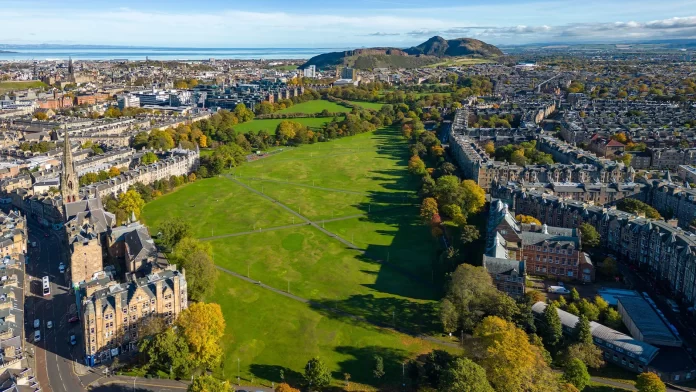While the world knows about St Andrews, two historic courses in Edinburgh helped shape the modern game of golf.
Thousands of golfers travel to Scotland each year, where the game originated. Many make the pilgrimage to the country’s historic courses, from the dramatic hills of the Royal Dornoch in the Highlands to the coastal plains of St Andrews, home of the revered Old Course and The Royal & Ancient Golf Club of St Andrews.
But those who make a beeline for these hallowed 18-hole courses are missing out on two of the games’ lesser-known – if equally sacred – sites. In Edinburgh, Bruntsfield Links and Leith Links are both still open to the public (Bruntsfield even hosts year-long golf), and they each played a pivotal role in transforming golf into the game it is today.
In the 1700s, these two links gave the world its first formal golf membership club and its first golf club house. It was at Leith that the first golf tournament took place, which was also the first time the rules of golf were written down. In essence: modern golf wouldn’t exist without Leith and Bruntsfield.
But with the recent “shock merger announcement” of the PGA Tour and the Saudi-funded LIV Golf, one of the world’s most popular sports is about to enter a new era. And as the globe’s oldest golf tournament (the Open Championship) starts this week, it’s worth looking back at how the sport took off.
“Edinburgh was Scotland’s biggest city [in the 1400s to 1700s], with important people like lawyers and judges and even the Stuart kings, who also played golf,” said golf historian Neil Laird, who runs the website Scottish Golf History. “The reason why Bruntsfield and Leith became so important is because of the proximity to [the old city of] Edinburgh and lots of important golfers.”
Finding space in the city
When I first moved to Edinburgh, Bruntsfield Links quickly became my favourite park. Its green lawns are less crowded than neighbouring The Meadows, and if you choose your spot carefully, you can see two unmistakable signs of the cityscape: Edinburgh Castle, one of the oldest fortified places in Europe; and Arthur’s Seat, the extinct volcano that towers over the city.
Something else makes the park special: Bruntsfield has always been an open park where people can play golf while others walk about, converse or just sit and enjoy the views. One evening this summer, players were making their way across the park’s short-hole course, a few feet away from sweaty runners, mothers pushing prams and students having a picnic.
This unique space-sharing arrangement goes back centuries. It’s commonly believed that golf originated from the medieval Dutch game of het kolven or kolf and crossed the North Sea to eastern Scotland in the early 1400s, where it took its modern form. The Scots created a custom-made club and ball, agreed that the ball’s target should be a hole in the ground and adopted their coastal sandy grasslands, called links, in old Scottish, as dedicated playing grounds.
Because of their proximity to Edinburgh’s Old Town and the fact that they were both public grounds, Leith Links and Bruntsfield Links soon became local favourites. But unlike modern golf courses, players shared the space with others in the city. As the game grew, golfers were soon competing for space with grazing animals, quarrymen and other residents.
“These links were used by people, horses and carriages. They were thoroughfares for the public,” said golf historian Harry Ward, curator of the Forgotten Greens site. “And the golf was played amongst all that.”

As the game became increasingly popular, both parks were frequented by prominent landowners and gentlemen of Edinburgh, all the way up to the royals. One of the early golfers was the Duke of Albany, brother to the King, and in 1681 he was annoyed. The future James VII of Scotland and James II of England, then in residence as King’s Commissioner in Holyrood, had heard enough of English noblemen claiming that golf was an English game and challenged them to a match to settle the matter.
The Duke chose a local golf ball maker as his playing partner, and the four took to Leith Links with balls, clubs and caddies. The first international golf match was thus played, won by the team representing Scotland, naturally.
The first clubs, rules, and tournaments
Around 1735, the Royal Burgess Society of Edinburgh was founded in Bruntsfield Links, thus claiming to be the oldest golf club in the world. Around the same period, the Gentleman Golfers of Leith – later renamed the Honourable Company of Edinburgh Golfers – started organising in Leith Links.
While the Duke and his friends had settled the fact that golf was decidedly Scottish, there was still no way to crown the best golfer. So in 1744, the Gentlemen Golfers of Leith sponsored a golf tournament to declare the “Captain of the Golf”. The Edinburgh Town Council purchased a silver club as prize and the organisers drafted a set of rules for the tournament.
The 13 original rules of golf, drafted in Leith, became the first written rules governing the game and the blueprint for following clubs. The city council invited players from across Great Britain and Ireland to play on Leith Links on 2 April 1744. In the end, only a paltry 10 showed up – all local Leith golfers – and the tournament was won by Edinburgh surgeon John Rattray.
These first rules (many of them specifically designed to suit the Leith course) became the starting point for modern golf regulations. According to Ward, when the St Andrews society was formed a decade later and wanted to organise its own tournament, they patterned their rules on Leith’s. Many of these rules – such as rule number 12, which states that the player whose ball is farthest from the hole goes first – are recognisable to golfers today.
Moving out of the centre
During the 18th Century, Leith and Bruntsfield continued to draw more and more golfers to the sport. In 1717, the Golfhall was built near Bruntsfield Links, and although formally a tavern, it was used by the players as their clubhouse. In 1768, the Leith golfers leased land to build their first clubhouse, called Golf House, just off the links. These spaces became the world’s first two golf houses.
According to Lauren Beatty, a PhD student at Glasgow Caledonian University researching mid-20th-Century women’s club golf in Scotland, the earliest written reference of women officially playing golf also comes from those years in Bruntsfield. In April 1738, two women were reported by the Caledonian Mercury newspaper as playing a match on the links, with their husbands acting as caddies. Nothing is known of the players except that the winner is named in the paper as “charming Sally”.
“It’s likely that there probably were more women playing at that time and probably earlier, but just within society at that time, women weren’t as present in written record,” Beatty said. As Edinburgh and Leith started expanding beyond the city walls, the sharing agreement in both common grounds became more precarious. Golfers were playing while people were walking in the park, which inevitably led to people being accidently hit with clubs or balls.

“They were competing with urbanisation,” said Laird. “Towards the end of the 19th Century, [golfers] had to leave. Partly because there wasn’t enough space for 18 holes, but partly because there were too many incidents involving golf balls hitting ordinary people. There were outcries about accidents.”
By the late 1800s, both historical clubs abandoned their original locations and opened new dedicated courses around Edinburgh where space-sharing was not an issue – essentially transitioning the sport from the public greens to private clubs. The Honourable Company (that played in Leith) moved to Muirfield in 1891 and the Royal Burgess (that had been based in Bruntsfield) moved to Barnton in 1895. Both still exist there.
Meanwhile, St Andrews was gaining prominence in the golf world. Its Old Course received its charter to play in 1552, while the Royal & Ancient Club (R&A) opened in 1754 and remained more stable than the Edinburgh clubs. In 1897, the R&A was given sole control of the Rules of Golf Committee, which it retains to this day (outside of the US and Mexico, which recognise a different authority).
“The topography of St Andrews allowed for expansion, including expansion for women,” said Hannah Fleming, Learning & Access Curator at the R&A World Golf Museum. “Whereas in other places, like Edinburgh, there wasn’t that much room to grow and expand the actual playing of golf.”
While St Andrews and other courses expanded, those in Edinburgh shrank. In 1890, the public grounds at Bruntsfield Links were transformed into a 36-hole short-hole course, occupying only a fraction of its original area. Some of the grandeur of the initial days left these grounds, but something remained: a conviction that golf can be played without needing to be behind closed gates.
This public nature is part of the unique character of Scottish golf, which is more open than that played elsewhere, said Fleming. As she explained, even at St Andrew’s prestigious Old Course, you don’t play behind private walls and top players can be seen from the surrounding streets. “In Scotland, there are many municipal courses, council courses and small pitch-and-putt courses,” Fleming said. “That’s how people got into golf for centuries, and they’re still doing that.”
While many of the world’s estimated 450 million golf fans will be glued to the Open Championship in Liverpool this week, Bruntsfield and Leith are still the places to go if golfers want to truly play the game as it was done between the 1500s and the 1800s: by sharing the field with other users.

Leith Links now only welcomes golfers for a week in July (from 12-15 July this year), when the Leith Rules Golf Society holds an annual event. Interestingly, the only reminder of its pivotal role in golfing history are three stones with bronze plaques that sit in the park’s northern boundary.
And despite a lack of funding, short-hole golf is still played at Bruntsfield Links, if far removed from the international golf spotlight.
“That’s how history works,” said Laird. “People who start things off are not always the same people who are there at the end.”
Source – BBC Travel















